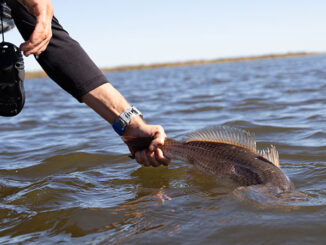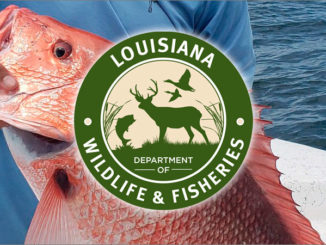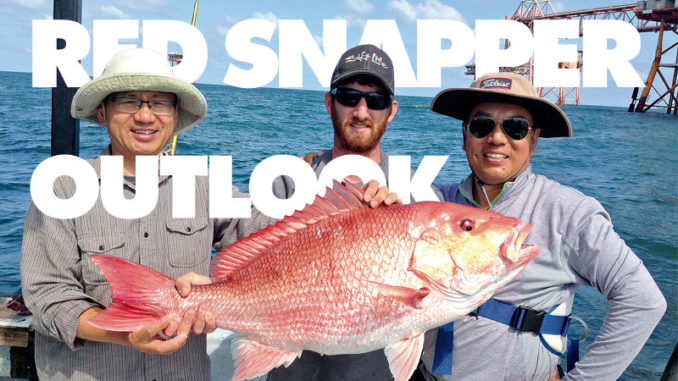
Tips, tactics & targets
The long awaited opening of red snapper season is finally upon us, and anglers across the state are eager to once again reel in what some consider the filet mignon of the gulf.
Capt. Troy Wetzel of Louisiana Offshore Fishing Charters (504-701-3474), based out of Venice, says it should be an awesome season.
“The big commercial boats have brought in some great catches of large red snapper, so that is a very good sign of a great season ahead,” he said.
The 2019 season
The Louisiana Wildlife and Fisheries Commission opened recreational red snapper season on Friday, May 24 in both state and federal waters. The season will run weekends only (Friday, Saturday, and Sunday including the Monday of Memorial Day and the Thursday of Fourth of July) with a daily bag limit of two fish per person and a 16-inch total length minimum size limit..
Last year the season was open 7 days a week beginning May 25, 2018 with a daily bag limit of two fish per person and a 16-inch total length minimum size limit. That closed on July 8 and reopened on July 13 of 2018 as a weekends only (Fri-Sun) season which closed on Aug 12.
Just as did last years season, the private recreational season will run concurrently in both state and federal waters up to 200 nautical miles outand federal waters.
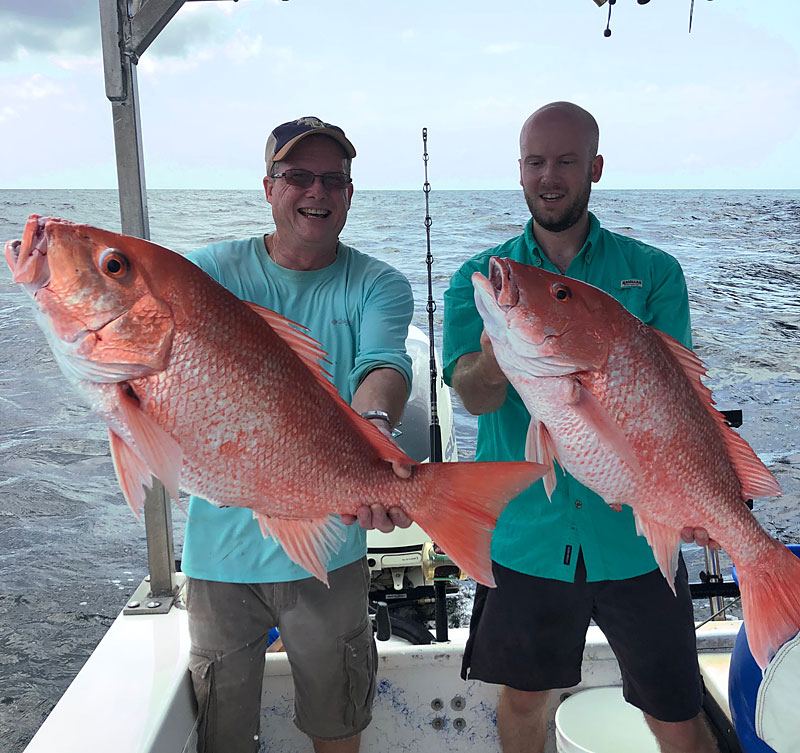
West Delta
Capt. Troy usually takes Red Pass out of Venice Marina and runs the 9-10 miles out to the Gulf of Mexico. From there its 12-15 miles out to 60-90 feet of water on the West Delta side, where you want to begin trying any of the rigs you see. The West Delta region is huge, covering around 1000 square miles of open water including the south extension, so there’s no shortage of rigs to fish.
“Early in the season you should catch some nice fish at the nearby rigs, but you’re also likely to catch quite a few juveniles in the process. Personally, I head farther out to deeper water about 24 miles out, to water at least 200 to 220 feet deep, for bigger fish in the 15-20 pound class,” he said.
Reefs
Rigs aren’t the only places to target red snapper. Capt. Troy says some of his best catches come not from rigs but reefs, both natural and artificial.
“I fish both reefs and rigs and am successful at both. The rigs anybody can see, so it’s good to have the coordinates of some underwater reefs to try when the rigs are crowded or just not producing,” he said.
Natural reefs in Louisiana are essentially uneven bottom contours that provide habitat for reef fish. The Louisiana Artificial Reef Program (see Artificial Reefs on the LDWF website for coordinates) created over 70 artificial underwater reefs by using parts of over 400 decommissioned rigs in the offshore waters, including many in the West Delta area in waters ranging from 135 to 270 feet deep. The Coast Guard requires a minimum of 85 feet of clearance over the top of these sunken rigs, which meant they could only be placed in water at least 100 feet deep. Access is therefore limited to offshore boats.
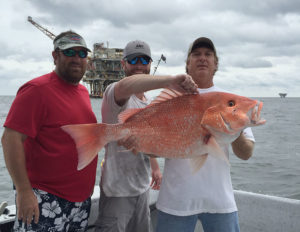
Tactics
Whether fishing reefs or rigs, Capt. Troy says his tactics are the same.
“I always use dead bait, either pogies or any cut bait, and drop my line all the way to the bottom, using a 16 or 20 ounce weight, and at least a 3 foot leader. First I give it a chance right on the bottom. If nothing bites, I crank up 5 or 6 turns and try there. Still nothing, I give it 5 or 6 cranks and try there. Red snapper can hold just about anywhere along the water column so keep trying till you find them,” he said.
Fascinating facts
- Red snapper can grow to about 40 inches long
- Red snapper can weigh up to 50 pounds (the official Louisiana state record is a 50 pound fish — the biggest of any gulf state — caught in June of 1996. The Texas record is a 40 pound fish caught in 2014, the Alabama record is 44 ¾ pounder caught in 2002 and Florida’s record is a 46 ½ pounder)
- Red snapper can live to be over 50 years old, though the average fish caught in the gulf is less than 10 years old
- The older the female red snapper is, the more eggs it will produce. A female reaches its peak productive years at about age 20, when it produces up to 1 million eggs per season
Don’t forget redfish
Capt. Troy says whenever you head offshore, always make it a point to bring some redfish gear along as well.
“I always fish the rocks along the mouth of the river on my way in for some big reds, just a bonus after a great day offshore,” he said.
Red snapper requirements
- All anglers must possess a valid Louisiana Basic and Saltwater Recreational Fishing License
- All anglers must possess a Recreational Offshore Landing Permit (ROLP) to fish for red snapper in state or federal waters.
- The ROLP is available free at the LDWF website.
- Exception: All anglers on a charter boat are covered by the charter captains ROLP
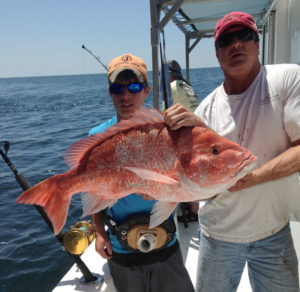
Boat requirements – State regulations:
All offshore anglers fishing for red snapper or any reef fish species are required to have the following gear aboard each boat:
- Non-Stainless Steel Circle Hooks when fishing with natural baits for reef fish.
- Dehooking Device. At least one dehooking device is required and must be used to remove hooks embedded in Gulf reef fish with minimum damage. The hook removal device must be constructed to allow the hook to be secured and the barb shielded without re-engaging during the removal process. The dehooking end must be blunt, and all edges rounded. The device must be of a size appropriate to secure the range of hook sizes and styles used in the Gulf reef fish fishery.
- Venting Tool. At least one venting tool is required and must be used to deflate the swim bladders of Gulf reef fish to release the fish with minimum damage. This tool must be a sharpened, hollow instrument, such as a hypodermic syringe with the plunger removed, or a 16-gauge needle fixed to a hollow wooden dowel. A tool such as a knife or an ice-pick may not be used.
The venting tool must be inserted into the fish at a 45-degree angle approximately 1 to 2 inches (2.54 to 5.08 cm) from the base of the pectoral fin. The tool must be inserted just deep enough to release the gases, so that the fish may be released with minimum damage.
Coordinates to Offshore Artificial Reefs
“Artificial Reefs”
Capt. Troy Wetzel of Louisiana Offshore Fishing Charters can be reached at 504-701-3474 or check his website at www.captaintroywetzel.com.
